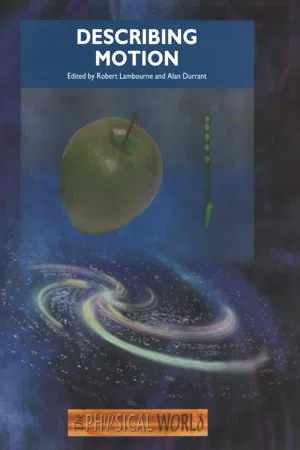Physics
Non Uniform Acceleration
Non-uniform acceleration refers to a situation in which an object's velocity changes at a non-constant rate over time. This means that the object's speed is not increasing or decreasing by the same amount in each equal interval of time. Non-uniform acceleration can be represented graphically by a curved line on a velocity-time graph, indicating changing acceleration.
Written by Perlego with AI-assistance
Related key terms
Related key terms
1 of 4
Related key terms
1 of 3
2 Key excerpts on "Non Uniform Acceleration"
- No longer available |Learn more
- Robert A. Pelcovits, Joshua Farkas(Authors)
- 2023(Publication Date)
- Barrons Educational Services(Publisher)
speed.Acceleration for nonuniform circular motionNote: We will defer further discussion of related problems and the derivation of the above equations until Chapter 6 when we will be equipped to solve more interesting problems.Example 2.17Figure 2.14 shows three objects with labeled velocity and acceleration vectors. Discuss these objects in terms of whether their speed and/or direction of motion is constant.Figure 2.14Objects (C) and (B) have nonzero tangential acceleration, so their speeds are not constant. Objects (A) and (B) have nonzero radial acceleration, so their direction is not constant.SolutionCHAPTER SUMMARYMotion along a straight line (one dimension) is described in terms of the position x(t) of the object at time t with respect to the origin, the instantaneous velocity v = dX/dt, and the instantaneous acceleration a = dv/dt. Speed is the absolute value of the velocity. Averagevelocity and acceleration are defined in terms of the net change of the displacement and velocity, respectively. When the acceleration is constant (UAM), the average and instantaneous accelerations are equal, and the position and instantaneous velocity of the object can be found in terms of the acceleration and the initial position and velocity. An important physical example of UAM is “free fall,” the motion of an object under the influence of gravity alone near the surface of the Earth.By using vector quantities, the position, velocity, and acceleration of an object moving in two dimensions can be quantified. Other than being time synchronized, the different vector components of the motion are independent of each other. Projectile motion provides an example of UAM in two dimensions. All kinematic quantities are defined with respect to a frame of reference. Observations in different frames of reference can be related in terms of the relative velocity of the two frames. - eBook - ePub
Describing Motion
The Physical World
- Robert Lambourne(Author)
- 2019(Publication Date)
- CRC Press(Publisher)
Most objects do not move at a precisely constant velocity. If you drop an apple it will fall downwards, but it will pick up speed as it does so (Figure 1.20), and if you drive along a straight road you are likely to encounter some traffic that will force you to vary your speed from time to time. For the most part, real motions are non-uniform motions. Figure 1.20 A falling apple provides an example of nonuniform motion. A sequence of pictures taken at equal intervals of time reveals the increasing speed of the apple as it falls. Figure 1.21 The Position–time graph for a car accelerating from rest. Figure 1.21 shows the Position–time graph of an object that has an increasing velocity over the period r = 0tor = 20s;a car accelerating from rest. As you can see, the Position–time graph is curved. There is relatively little change in position during the first few seconds of the motion but as the velocity increases the car is able to change its position by increasingly large amounts over a given interval of time. This is shown by the increasing steepness of the graph. In everyday language we would say that the graph has an increasing gradient, but you saw in the last section that the term gradient has a precise technical meaning in the context of straight-line graphs. Is it legitimate to extend this terminology to cover curved graphs, and if so, how exactly should it be done? Extending the concept of gradient to the case of curved graphs is actually quite straightforward. The crucial point to recognize is that if you look closely enough at a small part of a smooth curve, then it generally becomes indistinguishable from a straight line. (In a similar way, the surface of the Earth is clearly curved when viewed from space, but each region is approximately flat when seen close-up.) So, if we choose a point on a curve we can usually draw a straight line passing through that point which has the same slope as the curve at the point of contact
Index pages curate the most relevant extracts from our library of academic textbooks. They’ve been created using an in-house natural language model (NLM), each adding context and meaning to key research topics.
Explore more topic indexes
Explore more topic indexes
1 of 6
Explore more topic indexes
1 of 4

